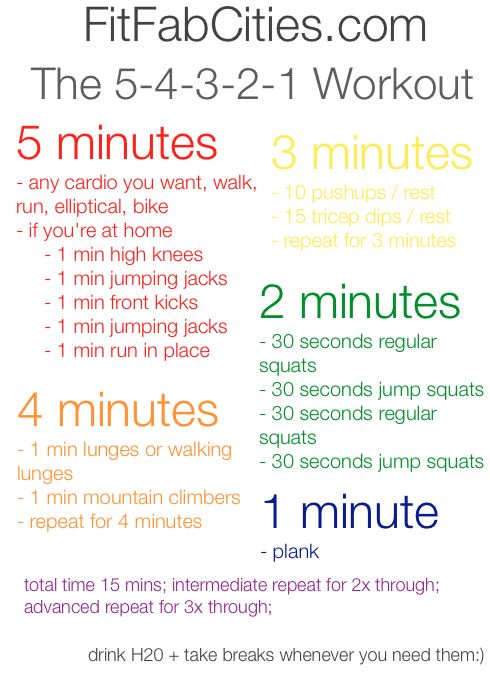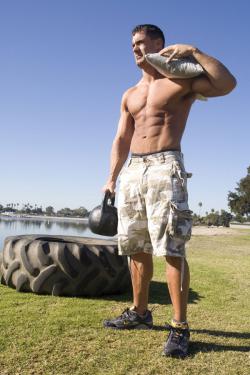
There are several levels of personal-training certifications. Among them is the National Academy of Sports Medicine (NASM). While this sound very high and mighty, it is quite easy to check. The higher the level of certification the better. Precision Nutrition Level 1 certification can be used to certify some personal trainers.
ACSM Certified Personal Trainer
ACSM Certification Review is a guide that will help you prepare to take the certification examinations for ACSM credentials. These credentials include ACSM Certified Health Fitness Specialist (ACSM Clinical Exercise Specialist), and ACSM Certified Personal Trainee (ACSM Certified Personal Trainer). Preparing for these exams will increase your chances of passing.

A variety of websites sell ACSM study guides. Some include sample questions while others provide a thorough review of the material. These resources include practice tests for ACSM CPT exams.
Precision Nutrition Level 1 Certification
It is possible to earn the Precision Nutrition level one personal training certification. This course is ideal for anyone who wants to offer additional services to their clients, or for those who have already started a career in the health and fitness industry. This course will give you the skills and knowledge to coach nutrition. It is practical and easy to understand.
Precision Nutrition is an online course that is offered worldwide. The online course is available at any time. You can also take it anytime. The program also includes tutors online as well as a written text. Access to a support community is also included in the program.
ISSA-Certified Personal Trainer Course
ISSA Certified Personal Trainee Course can help you start your personal coaching career. It takes approximately 10 weeks to complete the program, which includes both a detailed textbook and audio lectures. There are quizzes throughout the course to help you understand concepts. And, finally, there is a 200-question examination. Open-book exam: This will give you more time to use your knowledge in real life situations.

The ISSA Certified personal trainer course is available online. Although it does not offer live instructor sessions, the course provides extensive study materials and an active online community. The course was well-received by reviewers who praised its professionalism and depth. You will need to take at least 20 hours in continuing education each year after the course is over. A bonus is that you will receive a reduced renewal fee.
FAQ
What is exercise good for?
Exercise can help you lose weight, increase muscle mass, improve energy levels, reduce stress and improve your sleep quality. You will experience improved moods and self-esteem as well as increased productivity and a lower risk of developing heart disease.
How do I get started with Fitness?
Start small. Try taking 10 minutes each day to walk around the block. This will allow you to learn the basic movements and give your body time to adjust to the new routine. Once you are proficient in this type of exercise, add more steps and routines to your day.
Is it safe?
When possible, exercise outdoors. The air temperature isn't the only factor determining whether it's safe to exercise outdoors. Also, visibility, wind speed and humidity all play a significant role. Layers of clothing should be worn if you are exercising outside in inclement temperatures.
Why is fitness so important?
Physical fitness is extremely important for our health. Exercise is important to maintain your weight, strength and flexibility as well our cardiovascular system. Exercise can help you sleep better, reduce stress, increase self-esteem, and increase energy levels throughout your day.
What Are Cardio Exercises?
Cardiovascular exercises are ones that make your heart and lungs work harder. These include swimming, running, bicycling or rowing. These activities can help you lose weight and speed up your metabolism. These activities are great for staying fit because they strengthen your heart and lungs.
Do I lose weight if I exercise?
Yes. Regular exercise will help you to lose weight by burning extra calories. Exercise also helps keep your metabolism up, so you continue to burn calories even when you aren't exercising.
Statistics
- Globally, 81% of adolescents aged 11-17 years were insufficiently physically active in 2016. (who.int)
- An estimated 110,000 deaths per year could be prevented (cdc.gov)
- Globally, 28% of adults aged 18 and over were not active enough in 2016 (men 23% and women 32%). (who.int)
- In high-income countries, 26% of men and 35% of women were insufficiently physically active, as compared to 12% of men and 24% of women in low-income countries. (who.int)
External Links
How To
How to Lose Belly Fats More Fast
Belly Fat is often thought of as a problem when trying to lose fat. If you look at it, belly fat is actually a positive thing. It is the fat in your stomach that protects your organs. So let's see how to burn belly fat fast.
The main factors that contribute to our body fat accumulation are stress and inactivity. Stress makes us feel hungry constantly because it stimulates the production of the cortisol hormone. Cortisol is responsible for an increase in insulin levels. The insulin then stores extra calories as fat. A lack of sleep leads to adrenaline being released into the system which causes an increased appetite. These extra calories can also be reduced by exercise
There are many different ways to reduce bellyfat. You can choose to try any of these options, depending on your budget. Here are some quick tips to get rid of belly weight.
-
Eat less food. You should eat smaller meals throughout the day than you would if you ate three big meals. You will eat less calories in general.
-
Drink plenty of water. Water flushes out toxins in your body and helps you stay hydrated. Water before each meal can help you feel fuller longer and reduce your appetite so that you don't overeat.
-
Avoid snack foods that are unhealthy. If you're looking for quick fixes, snack foods like chips, cookies, candies, etc. It might sound tempting. These sugary treats have lots of empty calories so avoid them. Instead, choose healthy alternatives like fruits, veggies, nuts, seeds, and whole grains.
-
Strength training should be performed at least 3 times per week. Strength training increases muscle mass, which can help you burn more calories while still resting. Strengthening your bones, muscles as well ligaments, joints, tendons, heart and lungs.
-
Stretching and walking are good habits. Stretching improves flexibility and mobility which can reduce back pain. Walking is a great way of burning calories, especially when you do it for just 30 minutes.
-
Reduce alcohol intake. Reduce alcohol intake. Alcohol is a waste of calories and has no nutritional value.
-
Slowly lose weight. To lose weight, the first step is to determine what your current weight. Next, calculate your ideal weight by adding between 5% and 10% to your total body weight. Once you have established your ideal weight, reduce your daily calorie intake by 500 to 1000 calories each day until you achieve your goal.
-
Avoid processed food. These foods contain high levels of sugar, salt, and preservatives. Processed foods are often very convenient but don't provide enough nutrients to keep you healthy.
-
Don't skip breakfast! Consuming breakfast increases concentration, memory and energy levels. Breakfast should contain protein (like eggs), fibre (like oats), as well as complex carbohydrates (like oatmeal).
-
Have regular bowel movements. Constipation and irregularity cause bloating and gas. You can prevent this by drinking lots of water and increasing your fiber intake.